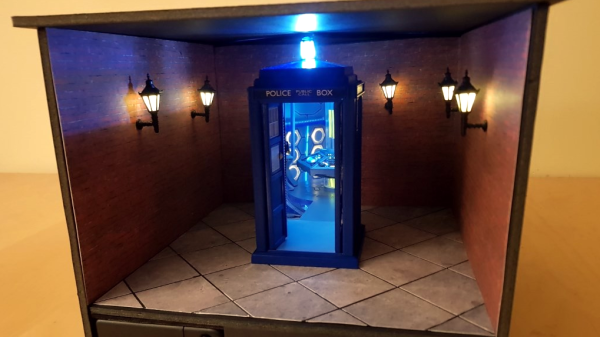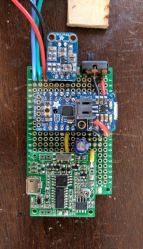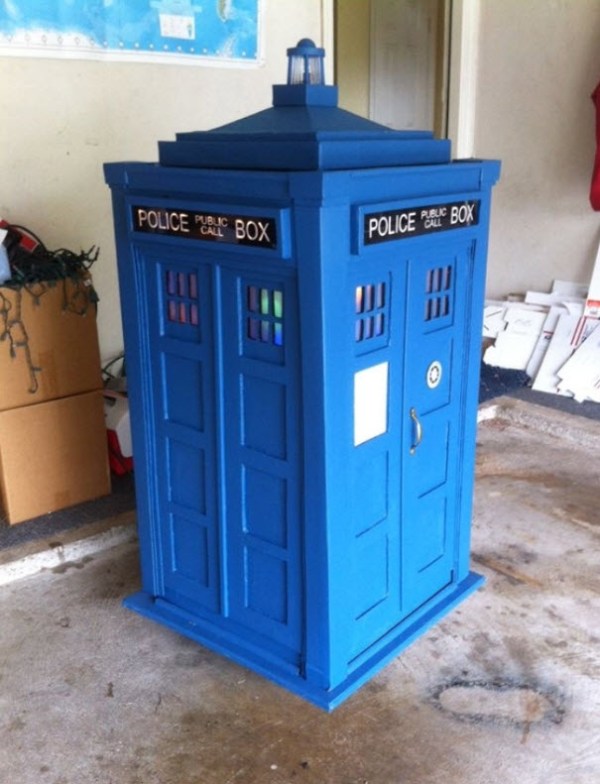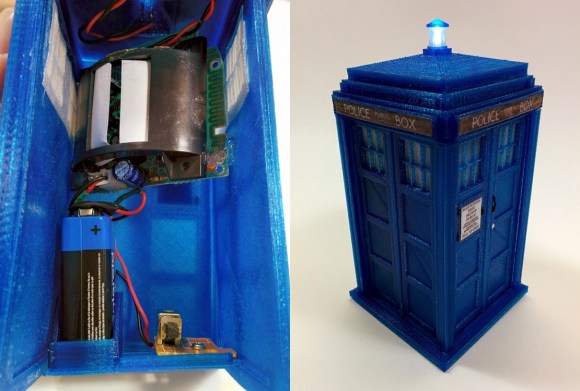Using LEGO Technic gears and rods seems like a great way of bringing animation to your regular LEGO creation. Using gears and crank shafts you can animate models from your favorite TV show or movie like LEGO kinetic sculpture maker, [Josh DaVid] has done when he created a spinning TARDIS. Crank the handle and the sculpture spins through space and time.
The large gear stays in place. The hidden gears, turned by the crank, rotate a shaft from below that goes through the large gear making the TARDIS rotate around the main axis. Connected to the TARDIS model is a smaller gear, at an angle, that meshes with the larger, stationary, gear. This smaller gear is what causes the TARDIS to rotate around its own axis while the whole thing rotates around the main axis. If your hand gets too tired, you can substitute a LEGO motor.
It’s a neat effect, and you can get the plans [Josh]’s Etsy page. The best part, however, is that you can get a set with all the parts as well! The TARDIS is a popular item here and we’ve had plenty of projects with it as the focus: Everything from a tree topper to sub-woofers. The only question we have, of course, is, ‘Is it bigger on the inside?’


















